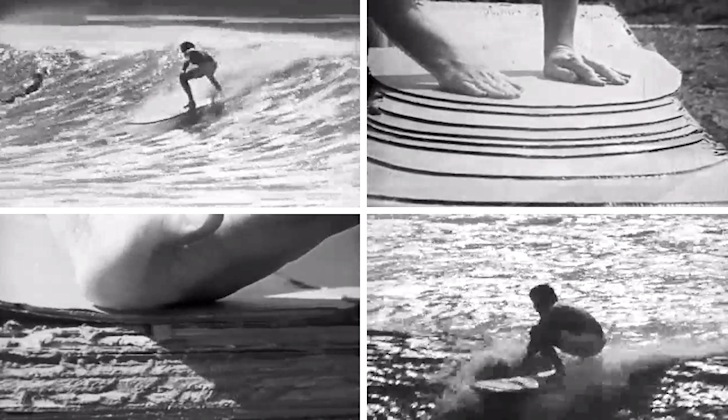Three years before inventing the boogie board, Tom Morey adventured himself into the making of a paper surfboard. Have you asked for buoyancy and flotation?
In 1965, surfing was exploding on the West Coast of the USA.
After being exported from Hawaii, the sport of riding waves was building a proper surf culture, in California, with its unique lifestyle and emerging surf industry.
The Detroit-born innovator started surfing in 1952 at the age of 18.
Two years later, he kicked off his endless talent for inventing and re-designing shapes and formulas in surfing.
Using resin-impregnated cardboards, Tom Morey produced the world's first paper surfboard, which became a TV commercial in 1966.
The TV Commercial
The unusual surfboard worked, despite all the criticism, and was marketed by the International Paper Company.
"I built the board from their cardboard, and it actually surfed," explained Morey after watching the TV commercial years later.
"The wind was howling, a huge 1000mm lens aimed at me from down wave."
"The director said, 'Go!' and I swing around, stuff, catch, pop-up, crank right, trim, squat, and scoot."
"About six perfect seconds go by. Trimming, dropping, and then I swing it up over and glide to a graceful end."
"Totally missed the shot. Thereafter, a comedy of errors."
"Yet still, Al Jenkins, the producer, somehow patched together a workable commercial."
"Look closely, and you'll note in the closing scene I'm paddling back out on half board," concludes Tom Morey.
There was a goal behind the paper surfboard.
The company wanted to prove how a box on the loading dock in the rain wouldn't dissolve into slop, as would a normal box.
Top quality waterproof materials. In the end, Tom Morey shaped three paper surfboards.
The first plank weighed 54 lbs, and he managed to surf waves with it at Makaha.
Learn how to shape a surfboard. Watch the best surfing commercials ever.
